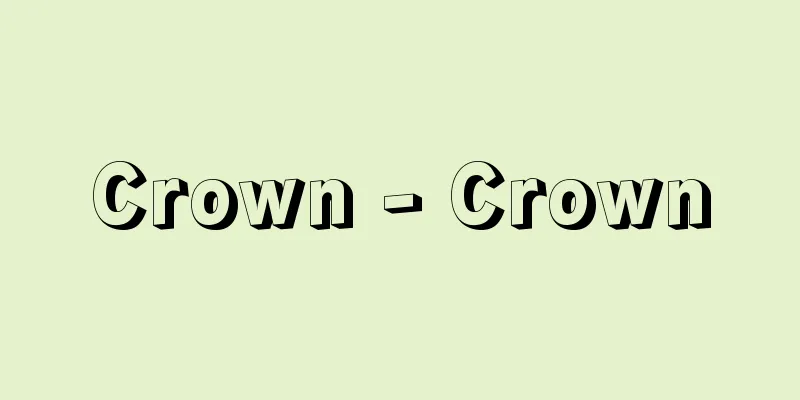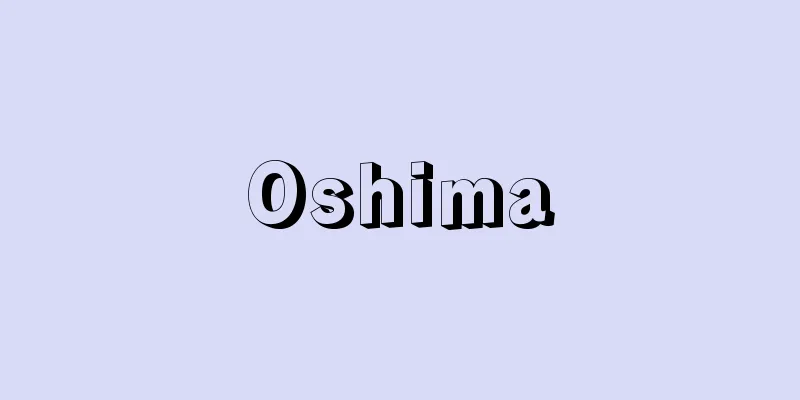Crown - Crown

|
A word derived from kouburi, komburi, and kamuri. In the broadest sense, it is a general term for headgear, but in the narrow sense, it refers to the headgear worn by Shinto priests during ceremonies. The origins of Japanese crowns are as follows: those from the Kofun period, as seen in clay figurines of people and excavated artifacts, were crown-shaped or cylindrical with openwork carvings, and did not cover the top of the head. Crowns in the Asuka and Nara periods, which followed the continental style, were initially differentiated by color, as seen in the 7th century's twelve-tiered crown system, but when the dress code was established in the 8th century, formal crowns for ceremonial wear (also called ceremonial crowns, and those worn by the emperor were specifically named benkan) and hooded crowns for morning and uniform wear came to be worn. In the mid-Heian period (10th century), as Japanization progressed and people began to wear formal attire, the prototype of today's crowns was completed. These crowns are called lacquer gauze crowns because they are flexible crowns made by applying lacquer to gauze. They differ from today's crowns in that the crown is thick on the forehead, and the crown's crown is called a swallowtail, and it gets wider from top to bottom, while the bottom end is rounded and curves inward. When strong costumes appeared in the early 12th century, the crown was thin on the forehead, and the crown became two overlapping strips like those worn today, projecting backward. This is the crown worn by Shinto priests today, originally for civil servants, but for military officers, the crown is a rolled crown with a crescent-shaped ornament called an ochikake. Western-style crowns are generally called crowns, and in the broad sense they include flower crowns, laurel crowns, jeweled crowns, and gold crowns, but in the narrow sense they refer to royal crowns. A royal crown is a crown worn by a monarch as a sign of nobility and dignity, and has been worn since the Middle Ages, following various historical events from ancient times. The current British royal family uses two types of tiaras: one for coronation and one for state occasions. A coronet is a flower crown or a jeweled crown, a diadem is a crown-shaped head ornament, and a tiara is a papal crown or triple crown. Source: Encyclopaedia Britannica Concise Encyclopedia About Encyclopaedia Britannica Concise Encyclopedia Information |
|
こうぶり,こうむり,かむりなどから転じた語。最も広義にはかぶりものの総称であるが,狭義には今日の神道の神主が儀式の際にかぶるかぶりものをさす。日本の冠の成立には,次のような歴史的経緯がある。すなわち,人物埴輪や発掘品にみられる古墳時代のものは,王冠型か透かし彫状の筒形で,頭頂をおおう形ではなかった。大陸風にならった飛鳥・奈良時代の冠は,当初,7世紀の冠位十二階制にみられるとおり色によって区別されたが,8世紀になって服制が確立すると,礼服用の礼服冠 (礼冠ともいい,天皇のものは特に冕冠〈べんかん〉と名づけられた) と朝服・制服用の頭巾 (ときん) の冠とがかぶられるようになった。平安時代中期 (10世紀) になって日本化が進み,衣冠束帯が着られるようになると,今日の冠の原型が完成する。これらは紗に漆を塗ってつくった柔軟な冠であるところから漆紗冠と呼ばれている。今日の冠と異なる点は,冠の額の部分が厚く,しかも纓 (えい) にあたる部分は燕尾と呼ばれ,上部から下部にいくほど広くなる一方,下端が丸くなり,内側に湾曲する形をとっていることであった。 12世紀初頭になって強装束が起ると,額が薄く,纓も今日のように2枚重なった短冊状になって後方に張出すようになった。これが今日の神主の冠で,もともと文官用であるが,武官の冠では纓が巻纓でおいかけと称する半月形の飾りがつく。西洋風の冠は一般にクラウン crownと呼ばれ,広義には花冠,月桂冠,宝冠,金冠なども含まれるが,狭義には王冠をさす。王冠は高貴,尊厳の印としてかぶる君主の冠で,古代からのさまざまな歴史的経緯をたどって中世以来かぶられるようになった。現在のイギリス王家では,戴冠式用と国事用の2種類が用いられている。クラウンに対するコロネット coronetは花冠,宝冠をいい,ディアデム diademは王冠型の頭飾りを,ティアラ tiaraは教皇冠や三重冠を意味する。
出典 ブリタニカ国際大百科事典 小項目事典ブリタニカ国際大百科事典 小項目事典について 情報 |
<<: Corona Borealis (English spelling)
Recommend
Megakaryocyte - megakaryocyte
These cells exist in bone marrow and form platele...
Podgolosok
...It is thought to have developed after the era ...
Thyroid-stimulating hormone
…Thyroid-stimulating hormone, also known as thyro...
Jiuta - Jiuta
A type of shamisen music. It is also written as j...
Evans, Edmund
…British picture book author. His father was a wo...
Hyperboreoids
A legendary Greek people who lived beyond the Nort...
Ames, W. - Ames
…After the Restoration, the Puritans quickly disi...
Fregilupus varius (English spelling) Fregilupusvarius
...They always live in small groups, perched on t...
Battle of Lechfeld - Battle of Lechfeld
In 955, Otto I, the German king, defeated the Magy...
Kouzuki [town] - Kouzuki
A former town in Sayo District, western Hyogo Pref...
"The Enriken Bihyo" - The Enriken Bihyo
…These integral tables are called Enri-Houjutsu o...
Functional capital - Yesterday's book
...The commodification of capital does not refer ...
buffalo-weaver
…This family is a relatively well-organized group...
Police dog
A general term for dogs used by police for search...
Emperor Higashiyama
1675-1710 * The 113th Emperor of the early to mid...









